This past weekend I had the opportunity to play Leatherstocking Golf Course, located on the shores of Ostego Lake in Cooperstown, NY. What was to be an upstate NY Ross-Travis-Emmet course trifecta on my birthday was truncated to Dev only. Of course, no visit to Cooperstown is complete without a visit to the Baseball Hall of Fame. In short, it was a great day.
Bob Cupp recently did some work on this grand old Emmet course. According to the staff, all of the tees were reconstructed to improve drainage; the #16 fairway was raised to eliminate a standing water problem; the small pond guarding the right side of the #16 green was enlarged and the small stream redirected; the bunker faces were resodded; and one of the bunkers on #2 was retired to "improve" play. (Hello, Mr. Travis.) The ever-amiable Leatherstocking crew had just last week won back the Emmet Cup from a rival club in the annual Devereux Emmet Tournament, played amongst the staff and members of five regional Emmet-designed courses.
While it rained all day Saturday, I managed to fit in a not-too-fast-and-firm 18 on a temperamental early Sunday morning. (The starter literally blew the air horn as I was walking off the last green as thunderstorms swept in.) Note that in all weather, wind definitely affects play on the course because of the geography.
Here are a few pictures from my round:
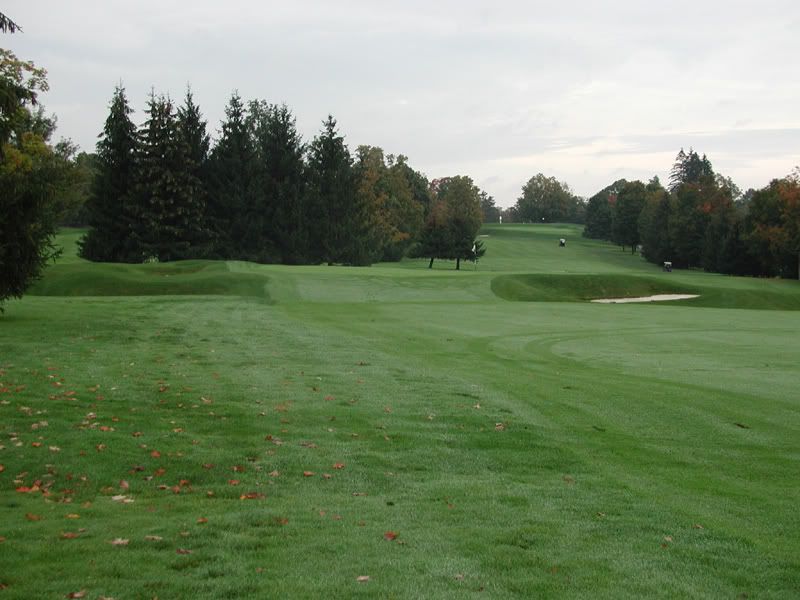
First hole, 340 Par 4, the approach from the left...
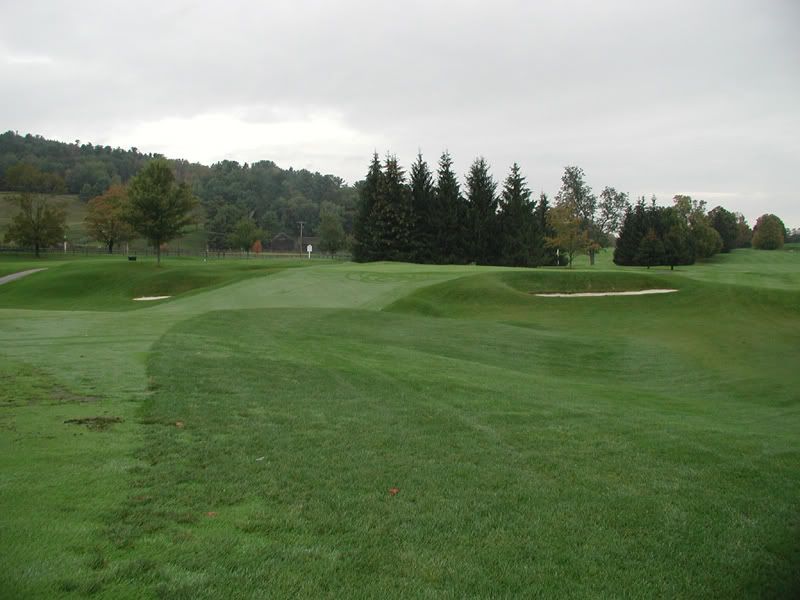
... or a reverse Redan second shot from the right.

No. 2 392 Par 4 from the tee.
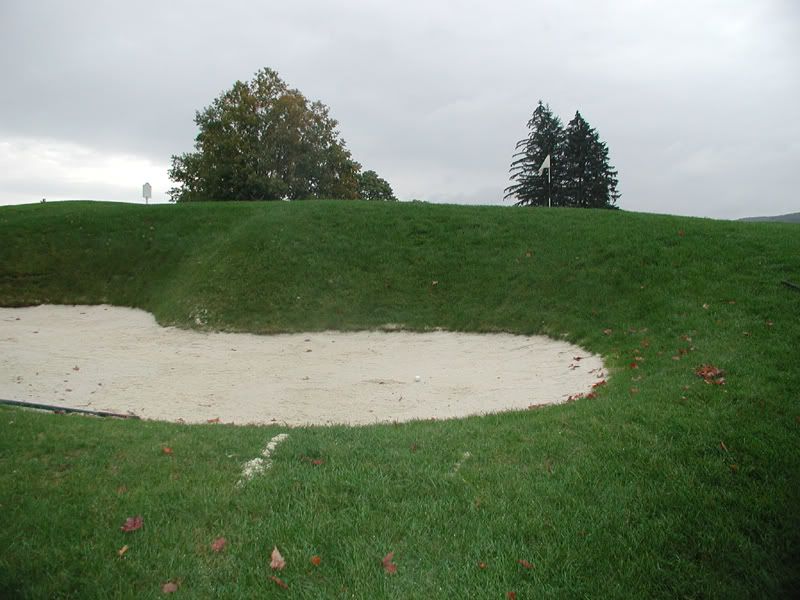
My second shot just missed the lip of the green and rolled into this tiny greenside bunker.
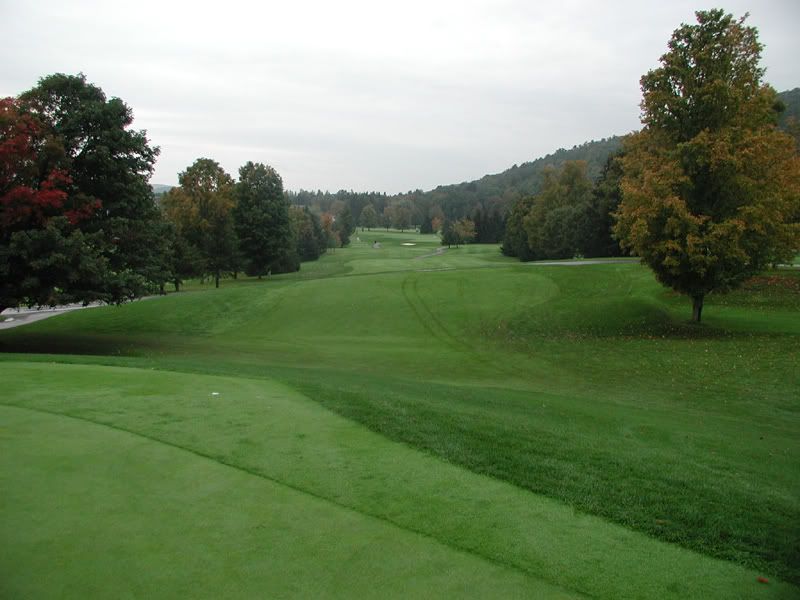
Looking back from the green, note the false front and huge swale in front of the green -- a feature that is blind from the tee and whose significant drop is not truly captured in this photo.
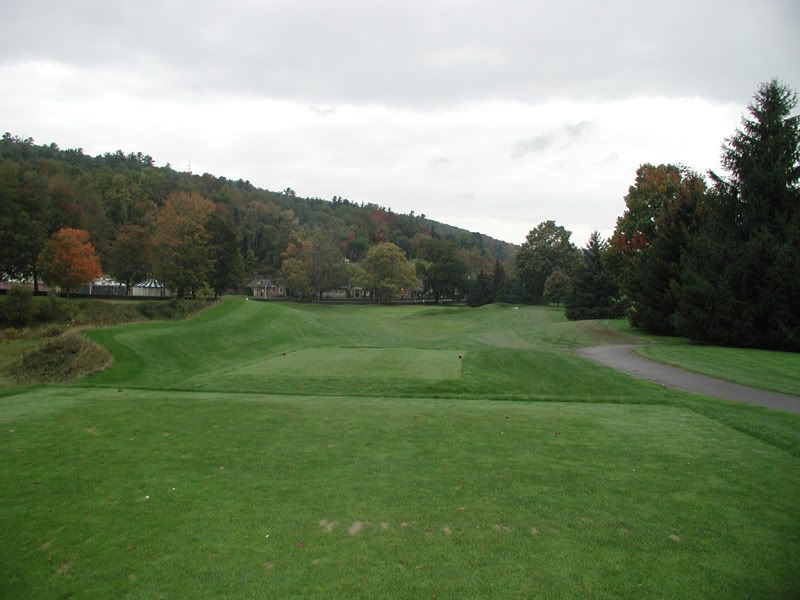
No 3 from the tee, 200 Par 3. That's the NYS Farm Museum across the street.
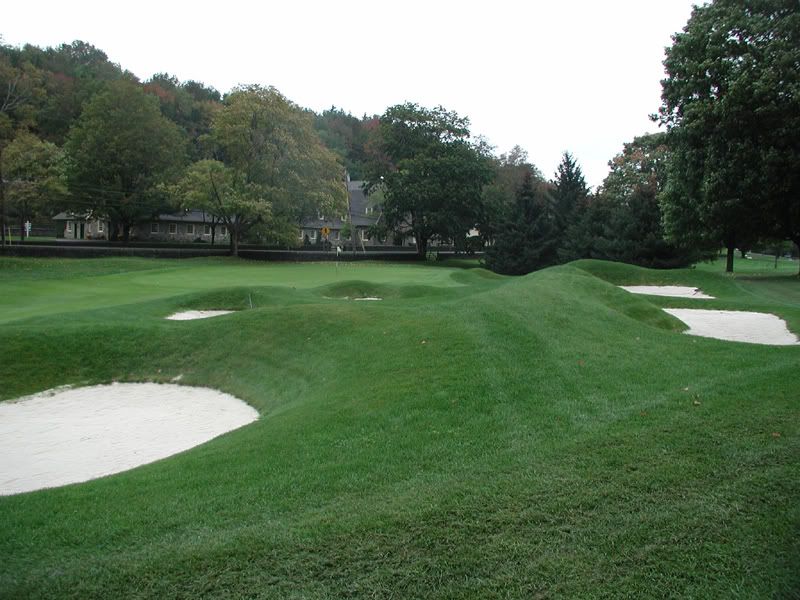
What's guarding the green...

#3 green. Hello, wind. A good shot just clears the last mound; but when the wind whips up, it blows down from the mountains toward the lake and pushes aerial shots into the bunkers.
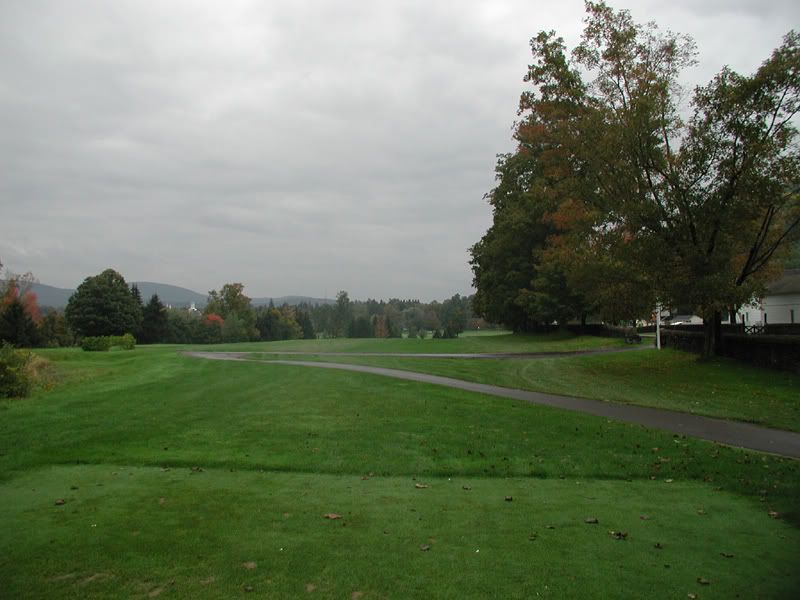
No. 4 from the Tee, a 513 Par5.
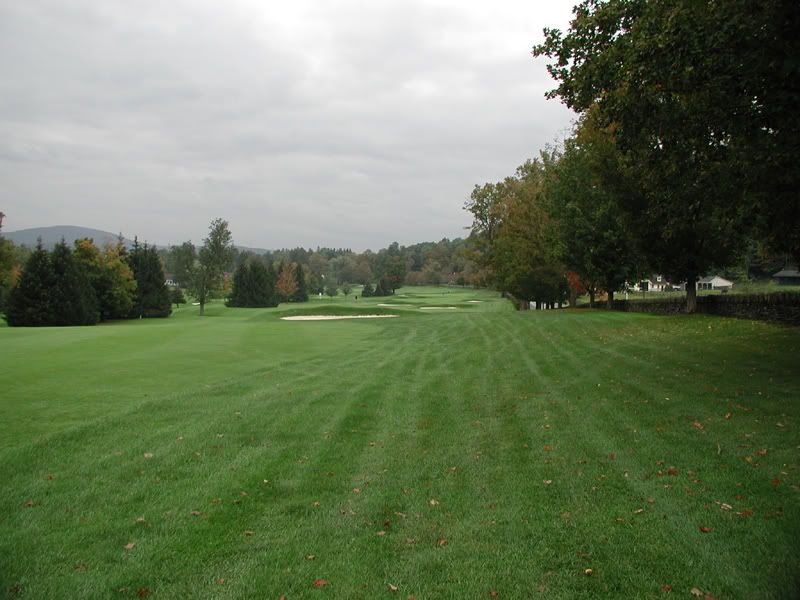
Emmet cross bunkers from the right side of the fairway...
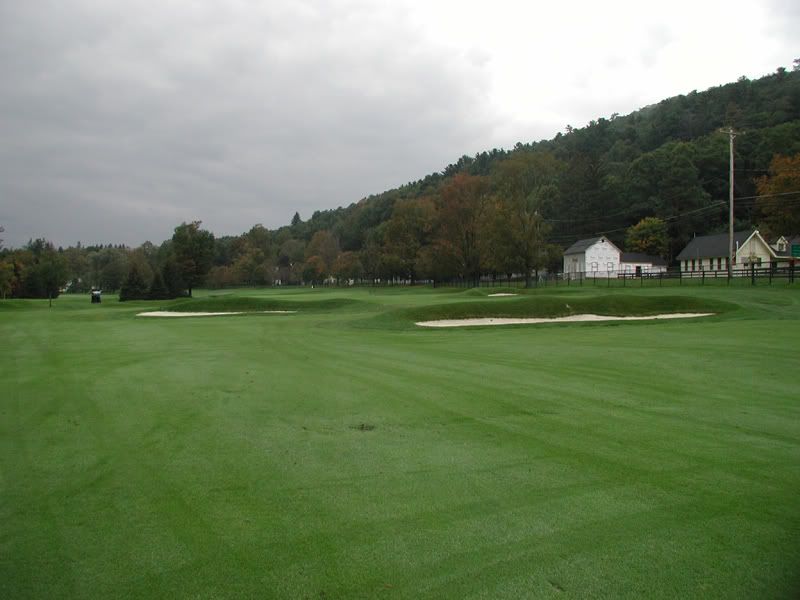
... and from the left.

The No. 4 green. Note the two huge swales, one at 200 yards and one directly fronting the green. Also note how the bunkers are now almost mirages.
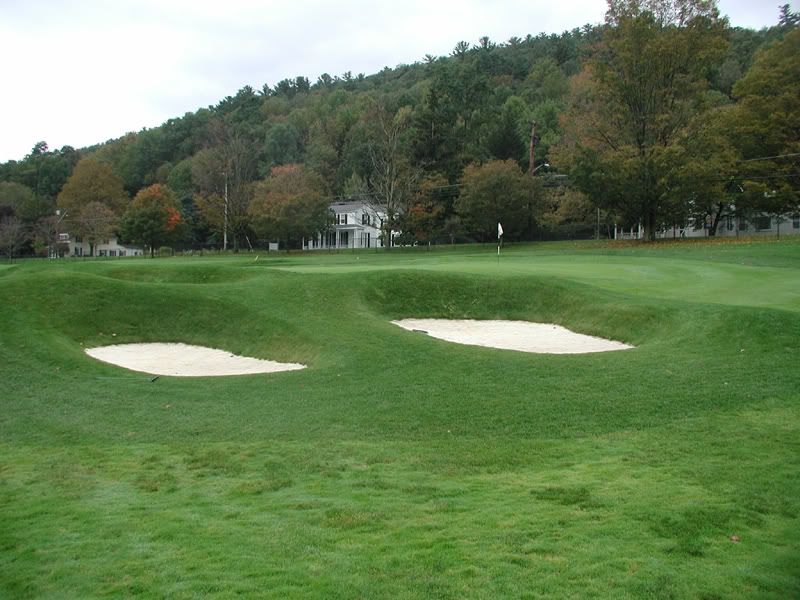
The bunkering on the left side of the No. 4 green.
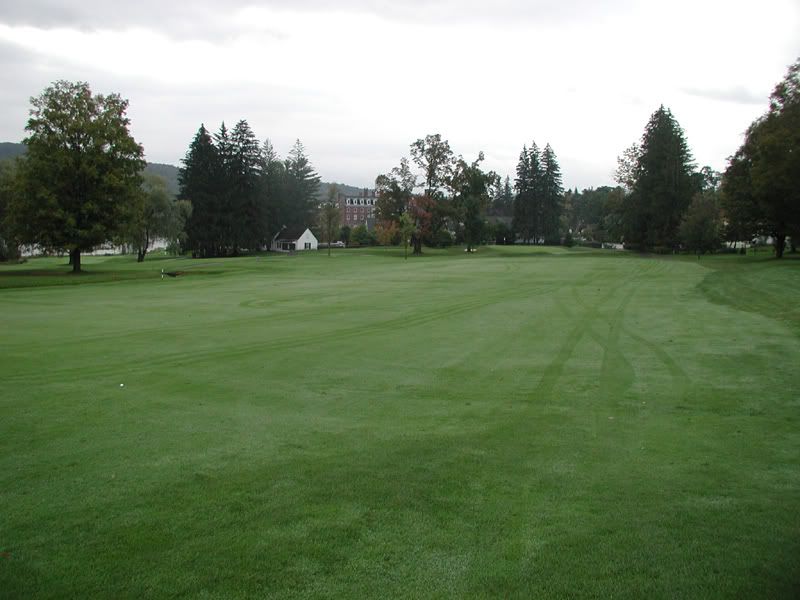
No. 5 is a dogleg left with a gentle run-up approach to a small green with bunkering at 40 yards out and surrounding the rear of the green. This is a subtle, sublime hole that is best played in dry conditions.
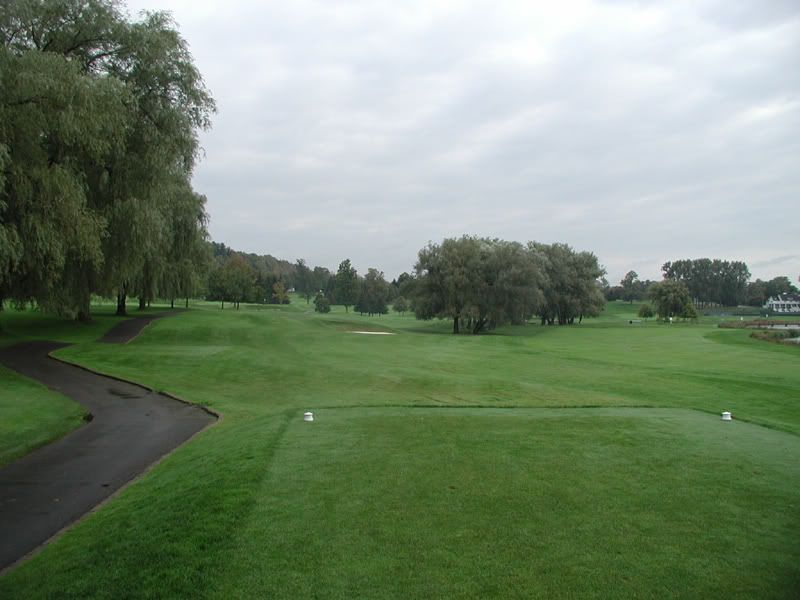
No. 6 from the tee. While the bunker would seem to pose a problem, the lateral water hazard beneath the row of willows is the unspoken threat -- along with the monster bullfrogs.
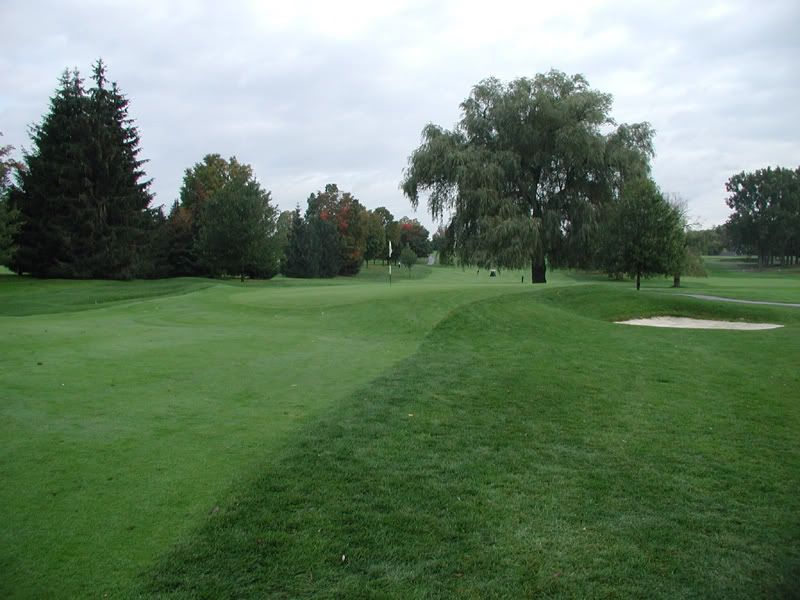
Approach to this postage stamp of a green...

...and from the rear. In addition to a false front and easy-off in the rear, the green is ringed with five bunkers.
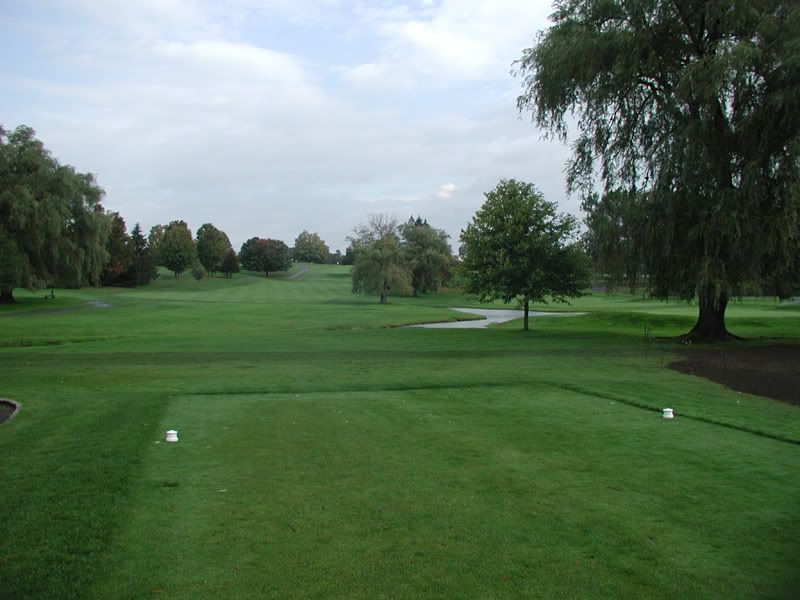
The No. 7 404 Par 4. Perhaps the most dramatic, deceptive, rewarding, and punishing hole on the course. Three landing areas, a 30ft.+ deep grass canyon, and an undulating green with a false front... it is hard to convey in pictures how the features of this hole appear or hide depending on one's approach.
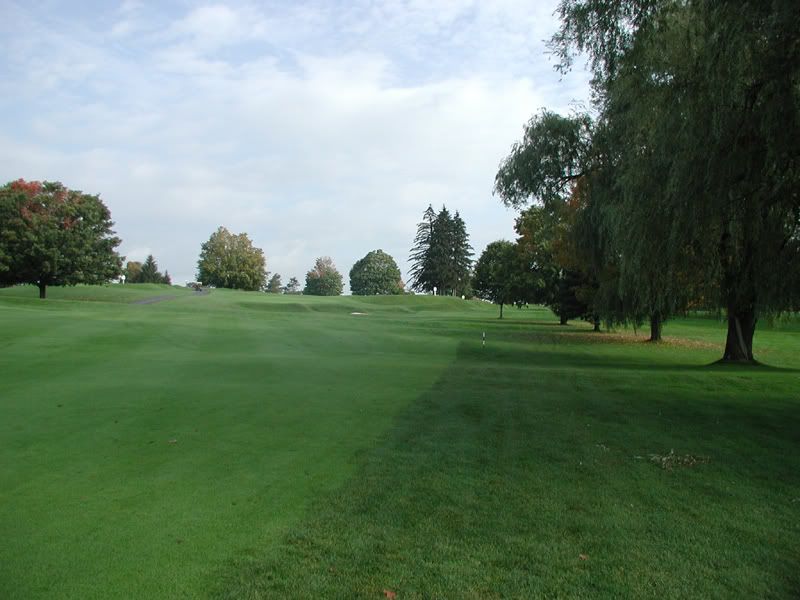
... from the fairway. What do you see?
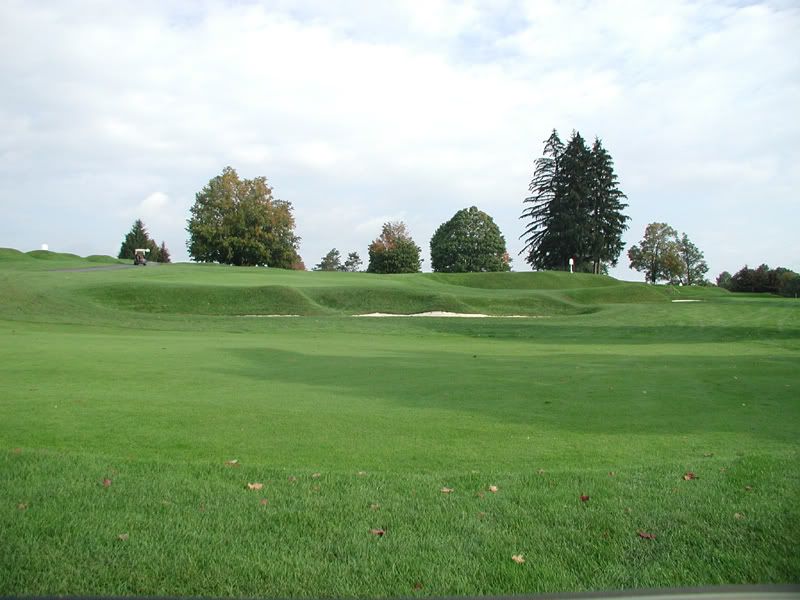
The ring of bunkers, seemingly the main hazard to avoid. Just aim for the pin. The worst thing that can happen with a missed short shot is it will roll back to rest for a pitch up, no? Note how quickly the weather changed.

The final landing area...
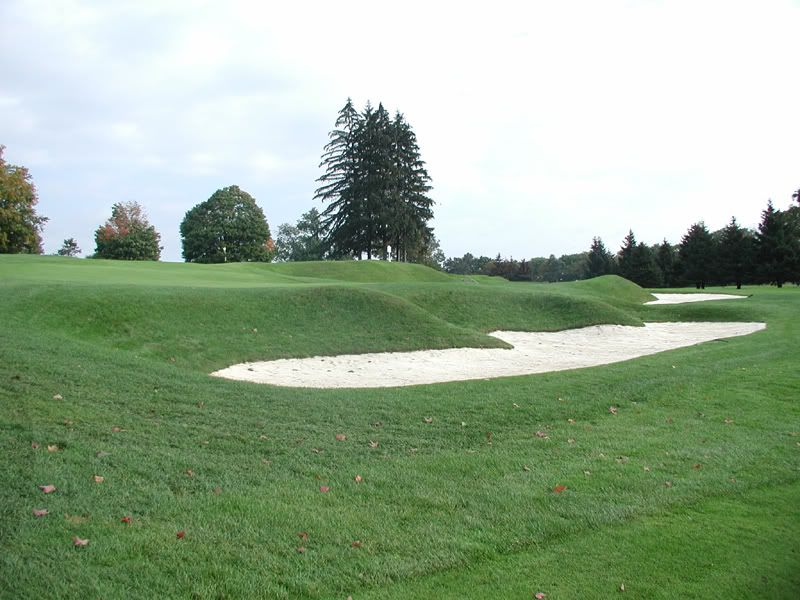
... another view.
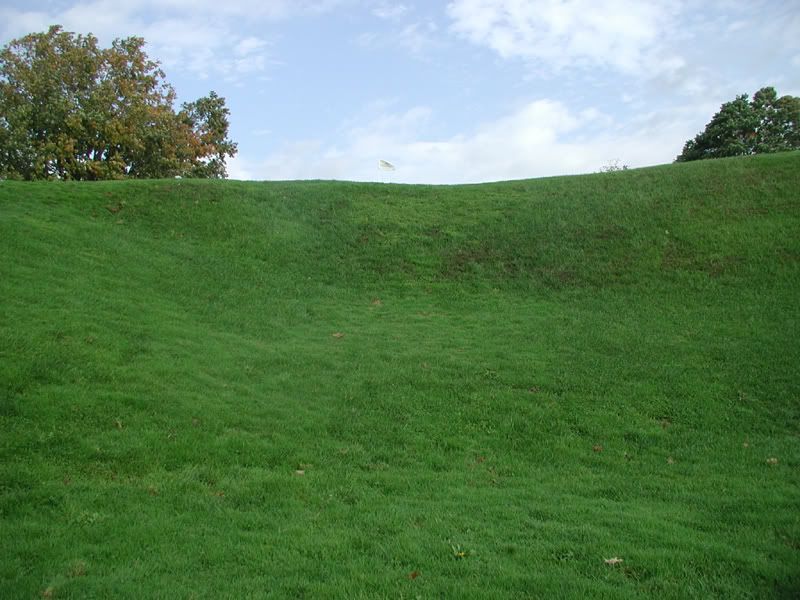
No. A 35-40ft drop with a shot that veers juuuuuuust right. I had to climb down in to get this shot, but it doesn't capture the feeling of relief when you first discover how narrowly you escaped this grass pit, especially with the wind coming into play (see next picture; again, l-to-r direction).

And looking back from the green. Where are the hazards? Many golfers must leave this green looking back and wondering if it was just a bad dream.
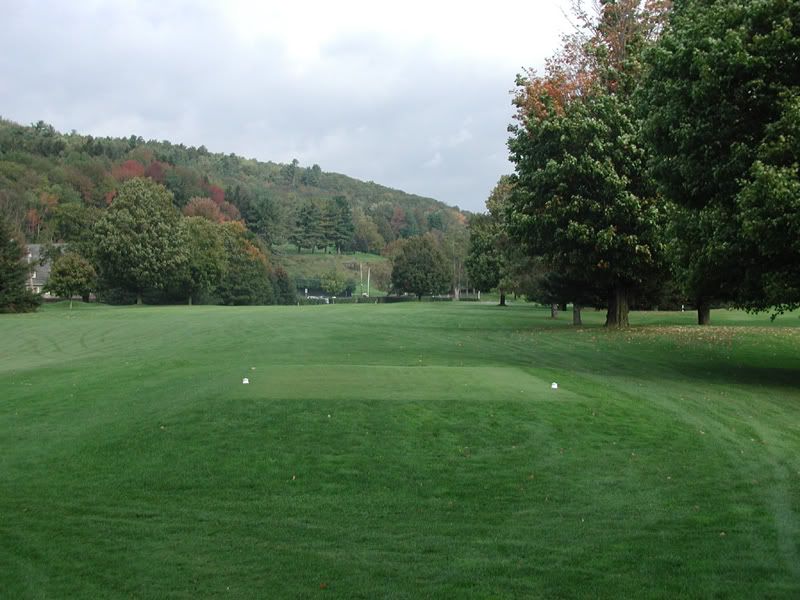
No 8 375 Par4 tee.
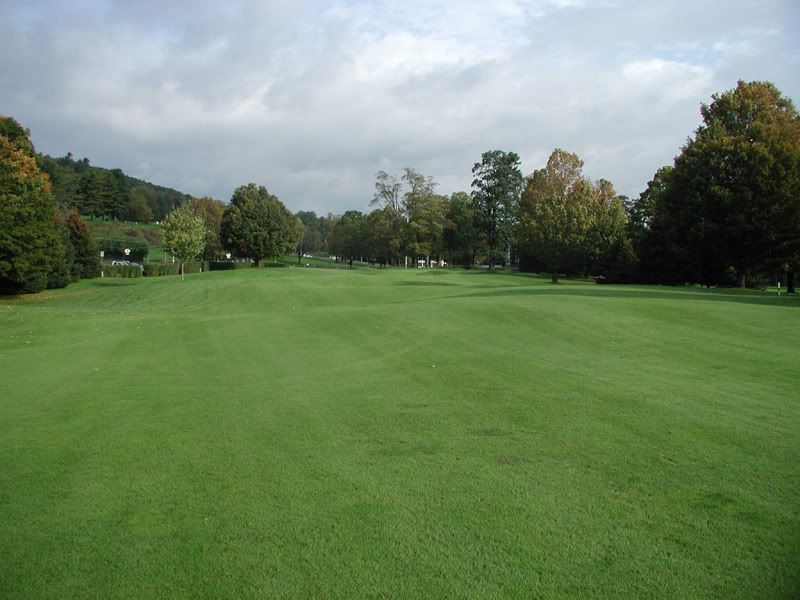
No. 8 fairway.
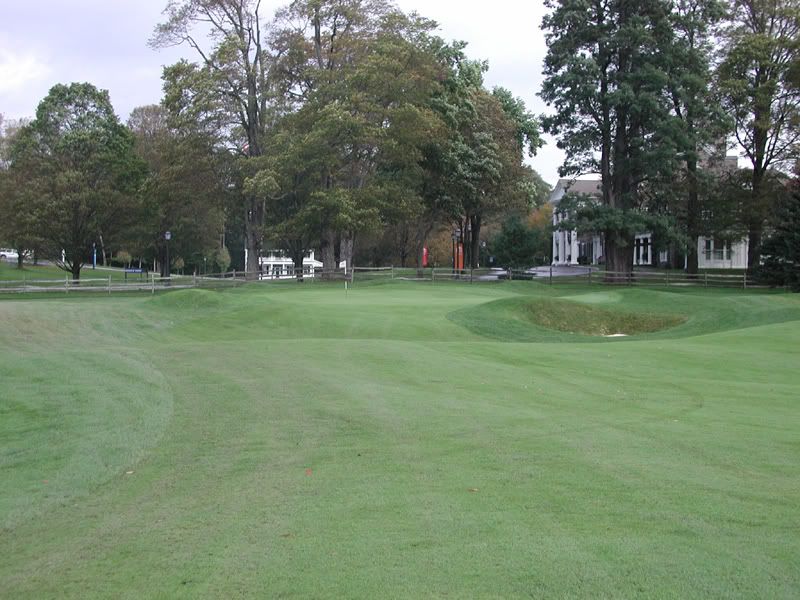
Approach to the green. That is the Fenimore Art Museum in the background, site of the old Fenimore Farm, which burned down in the 19th century.
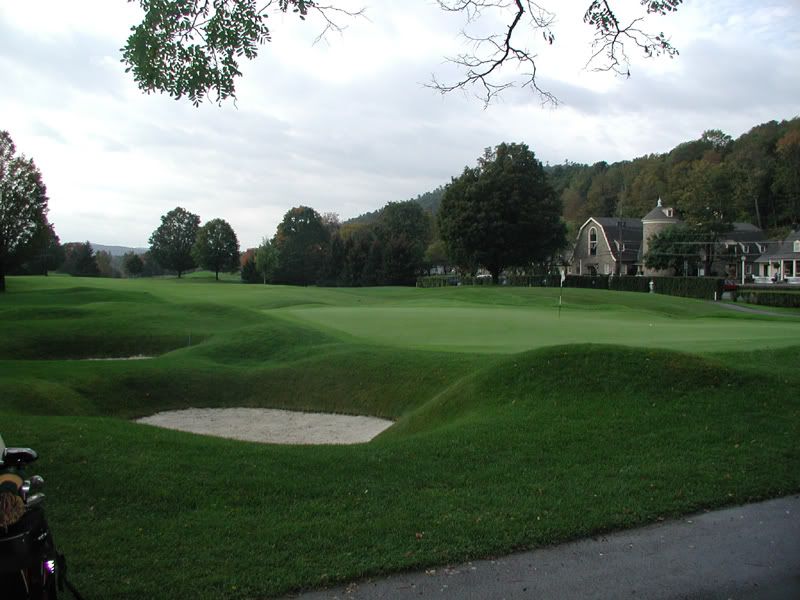
The bunkering on the right side of the green.
The 186 Par 3 No. 9 is located across Rt. 80, along with Nos. 10-12.
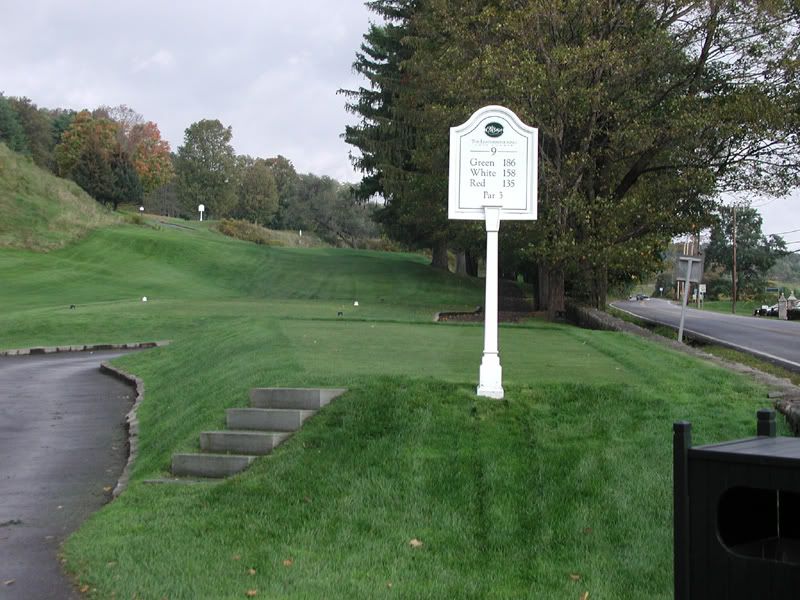
No. 9 is a narrow hole where again the hazards are not apparent from the tee.
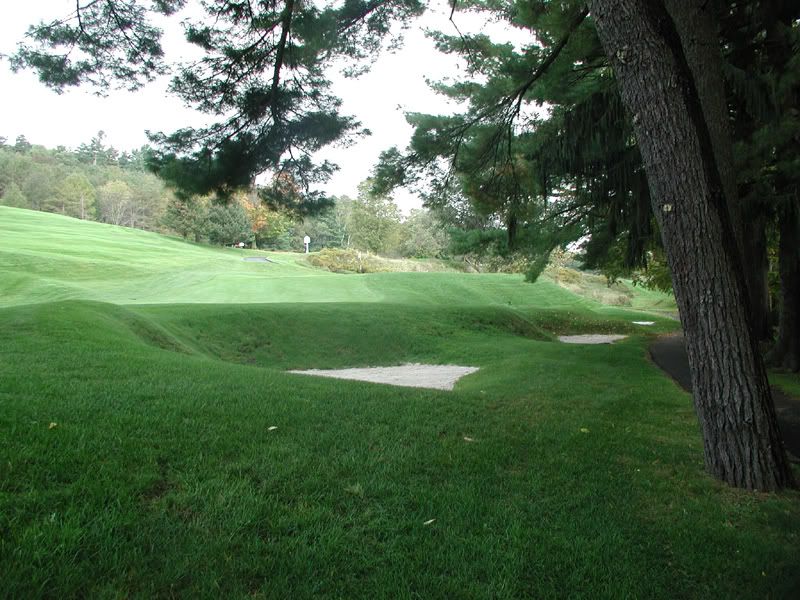
Some of the obstacles along the way.

A flat green to receive aerial shots, but no recourse to the high left, right, or rear. (Not pictured is a 20 foot drop to the rear of the greenand a small bunker to the left front of the green that captures shots that fall short to the safe angle of approach.)
Not one hole on the course is similar to another. While the Emmet holes I dislike are usually three-shot holes, I was truly inspired by each turn regardless of type, and despite the weather and less-than-optimal playing conditions (eg. in some instances, mud).

Tomorrow, the back nine, mmm?